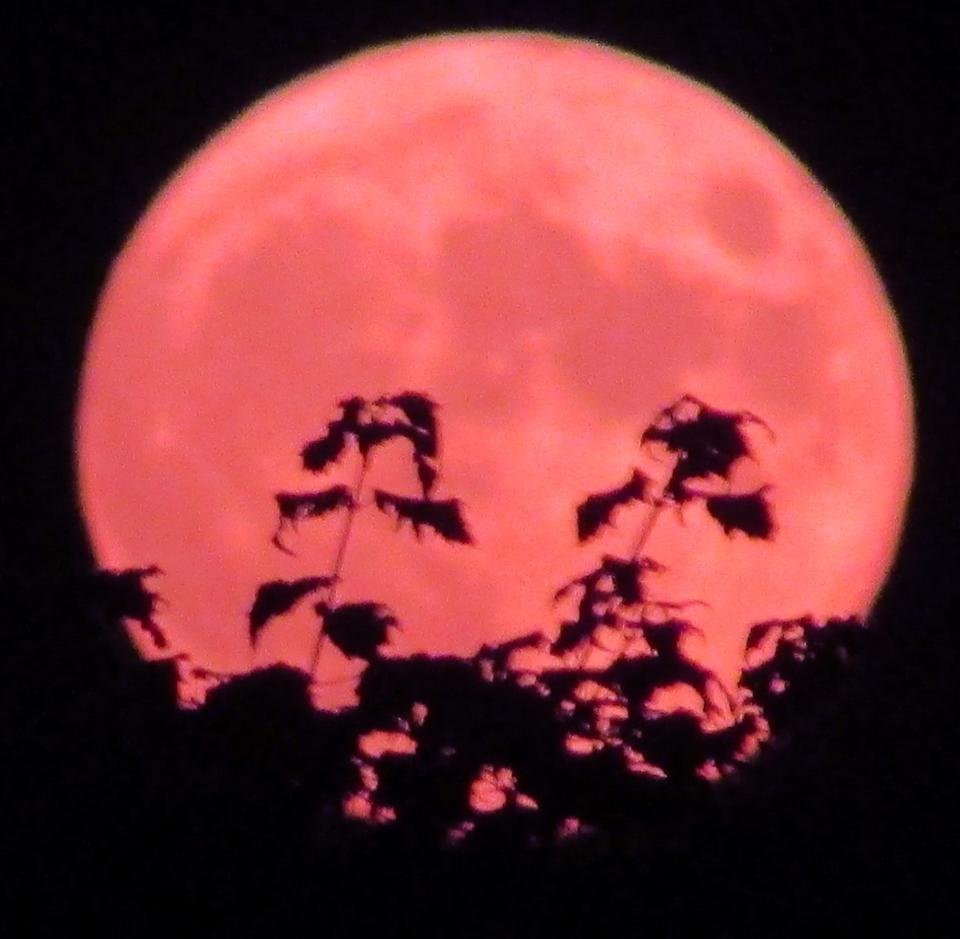Another supermoon, this one called the Buck Moon, is rising on July 13, and it's the last one of the year
It’s a big week for astronomical events.
Right on the heels of the Webb Telescope image release, there’s a supermoon rising on Wednesday.
Just after sunset on July 13 — at 9:07 pm — look to the southeast to catch a glimpse of the Buck Moon, July's full moon.

This Buck Moon also happens to be a “supermoon,” a special astrophysical phenomenon that makes the moon appear bigger and brighter than usual.
While it’s not every month that we have a supermoon, there have been two this summer, back-to-back.
Just a month ago, the Strawberry Moon – June’s full moon – was also a supermoon.
If you happened to catch a glimpse of the Strawberry Supermoon, the Buck Supermoon may look even bigger.
According to the Farmers Almanac, the Buck Moon will be about 124 miles closer to Earth than the Strawberry Moon, making it loom larger.
The moon orbits Earth in an elliptical shape – not in a perfect circle – so its distance to Earth changes each time it orbits. When the moon reaches its closest point to Earth, this is called perigee; its furthest point from Earth is known as apogee.
Supermoons are interesting because conditions have to be just right: The moon must be at perigee and it must be a full moon.
Supermoon guide: A visual report to all the full moons around the year
The moon reaches its closest point to Earth every 27 days, Jennifer Stafford, an astronomy graduate student at the University of Wisconsin-Madison said in an interview last month. A full moon occurs every 29½ days.
Since there is a slight difference between these two calendar events, it’s uncommon when a supermoon occurs — sometimes only twice a year.
Recognizing a time of re-growth
The Buck Moon name is rooted in Indigenous history.
Native Americans, Stafford explained, attribute wisdom and reverence to the moon and use it as a way of tracking the seasons.
The Strawberry Moon, for example, is inspired by strawberry season, with strawberries being their ripest in June.
July's Buck Moon refers to antler changes on male deer (bucks). Each winter, bucks shed their antlers, and by July, their antlers have reached their peak growth.
This moon has also been referred to as The Thunder Moon because thunderstorms are prevalent during this time of year. For example, Milwaukee typically has an average five thunderstorms in July, said Mark Gehring, a meteorologist at the National Weather Service.
The Buck Moon and the Strawberry Moon are just two monikers ascribed to the many full moons that occur throughout the year.
When and how to moon-gaze
What makes summer special for moon-gazing, Jim Lattis, director of UW-Madison Space Place said in an interview earlier this summer, is that full moons are lower in the sky. During the summer season, the sun is higher, and the moon is lower, making the moon especially picturesque.
It will appear biggest when it’s lower in the sky, near the horizon — just after rising, or just before setting — due to a scientific phenomenon called "the moon illusion."
When the moon is near the horizon, it tends to look larger because there are objects — like trees and buildings — that offer a size comparison.
When the moon is highest in the sky, there are no points of comparison, so the illusion disappears, and the moon looks "normal" again.
The moon will be at its highest around 12:30 a.m. on July 14, and that's when gazing conditions will be best, with no objects obstructing the view.
Even better: The skies are forecast to be clear Wednesday night, Gehring said.
This will be the last supermoon until August 1, 2023.
Our subscribers make this reporting possible. Please consider supporting local journalism by subscribing to the Journal Sentinel at jsonline.com/deal.
DOWNLOAD THE APP: Get the latest news, sports and more
This article originally appeared on Milwaukee Journal Sentinel: Super Buck Moon appearing July 13 is final supermoon of 2022

